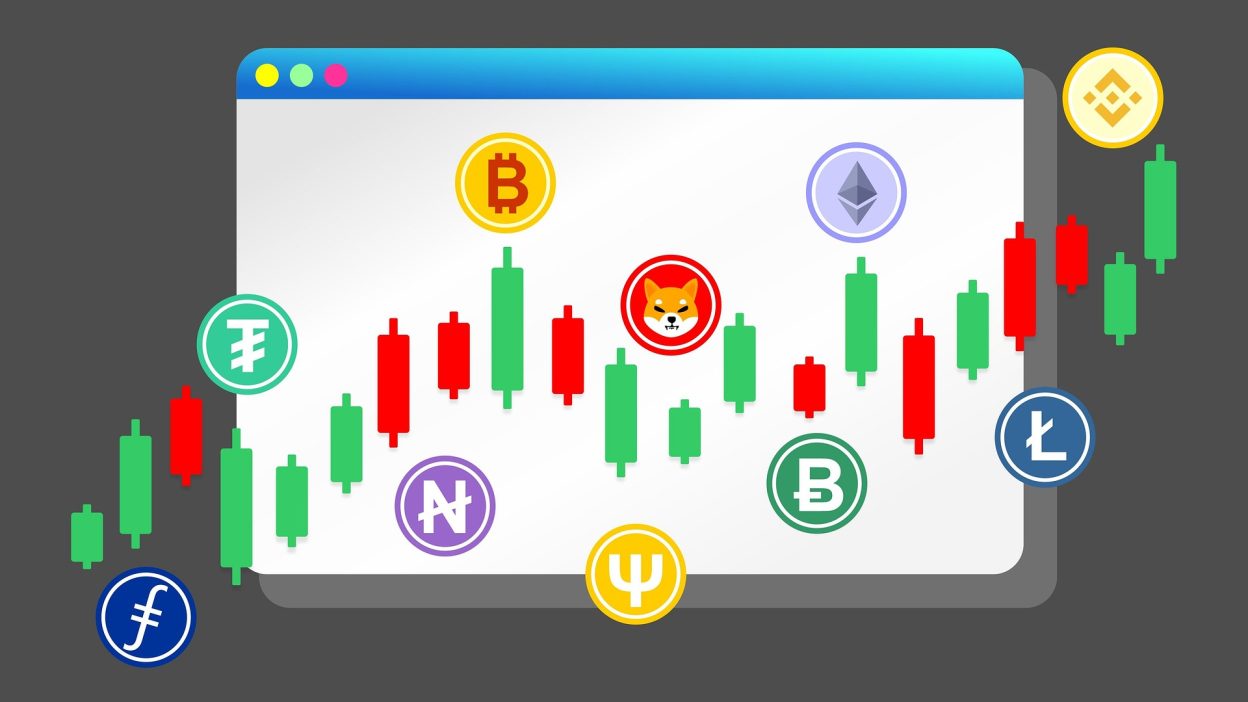Cryptocurrency has disrupted the financial world, creating new opportunities for profit and growth. Whether you’re looking to make quick profits or build long-term wealth, crypto trading and crypto investing offer distinct paths to financial success. But the question remains: Which one is better?
Both approaches have their advantages, but each requires different strategies, risk levels, and time commitments. In this blog, we’ll dive deep into the world of crypto, exploring crypto trading vs crypto investing, what each entails, and which strategy might work best for you. By the end, you’ll have a clear understanding of how to approach the crypto market with confidence.
Crypto Trading: A Fast-Paced, Skill-Driven Approach
Crypto trading involves the buying and selling of cryptocurrencies within short time frames, aiming to profit from price movements. This approach is often suited to individuals who are comfortable with taking risks and actively engaging with the market. Here’s everything you need to know about crypto trading:
- How to Trade: Trading is usually done on platforms like Binance, Coinbase, or Kraken, where users can access a wide range of cryptocurrencies. Traders use technical analysis — examining price charts, market trends, and various indicators to predict price movements. You can also use automated trading bots for quick execution of trades.
- Why Trade: Trading offers the potential for high returns in short timeframes. If you’re adept at reading market trends, you could make significant profits. Traders capitalise on price fluctuations by buying when prices are low and selling when they rise.
- Where to Trade: The best places to start crypto trading are major cryptocurrency exchanges such as Binance, Coinbase Pro, and Kraken. These platforms offer robust features for traders, including advanced charting tools, multiple order types, and high liquidity, which are essential for fast-paced trading.
- Coins to Trade: Popular coins to trade include Bitcoin (BTC), Ethereum (ETH), Ripple (XRP), and Litecoin (LTC). Altcoins, such as Solana (SOL) or Cardano (ADA), may also provide great opportunities for short-term profits due to their volatility.
Supporting Example:
In 2021, Bitcoin surged from around £10,000 to over £40,000. Skilled traders who capitalised on these price shifts saw substantial profits. For example, a trader who bought Bitcoin at £10,000 and sold at £30,000 would have made a 200% profit.
Crypto Investing: A Long-Term Strategy for Building Wealth
While crypto trading is about quick, frequent transactions, crypto investing is about holding assets over a long period, with the expectation that their value will increase. This approach requires less active involvement but still demands strategic thinking. Here’s a breakdown of crypto investing:
- How to Invest: Investing in cryptocurrency involves purchasing and holding coins for extended periods, often several years. Popular platforms for investing include Coinbase, Gemini, and Binance, which allow you to easily buy and store cryptocurrencies in wallets. Many investors choose to store their assets in cold wallets (offline storage) for enhanced security.
- Why Invest: Investing is typically less risky than trading because you are not constantly exposed to the market’s short-term fluctuations. Over time, the value of well-established cryptocurrencies, like Bitcoin, Ethereum, and Polkadot (DOT), has generally increased, which makes investing a suitable strategy for those looking for long-term growth.
- Where to Invest: The best platforms for long-term crypto investment are often the same as those used for trading, but with a focus on security and storage. Leading platforms like Coinbase and Gemini provide users with options to store their investments securely. Some investors also prefer using decentralized exchanges (DEXs) like Uniswap or PancakeSwap for certain tokens.
- Coins to Invest In: If you’re considering long-term investing, focus on Bitcoin and Ethereum, the two largest and most established cryptocurrencies. Additionally, coins like Chainlink (LINK), Cardano (ADA), and Polkadot (DOT) have gained attention for their innovative platforms and growing adoption.
Supporting Example:
In 2013, Bitcoin was valued at just £100. Investors who bought early and held their assets have enjoyed substantial returns, with Bitcoin recently reaching over £30,000. The same can be said for Ethereum, which saw its price rise from around £10 in 2015 to over £2,000 in 2021.
Key Differences Between Crypto Trading and Crypto Investing
To understand whether crypto trading or crypto investing is the better option for you, let’s compare the two approaches in key areas:
- Risk & Reward: Trading is riskier because of the short-term volatility, but it offers quicker rewards. Investing is generally less risky but takes longer to see profits.
- Time Commitment: Trading requires constant market monitoring and active decision-making. Investing, on the other hand, involves less hands-on activity and is more passive.
- Skill Level: Trading demands significant expertise in technical analysis and market trends. Investing focuses more on patience, understanding long-term trends, and choosing the right assets.
- Market Behaviour: Traders thrive on market volatility and aim to profit from quick price changes. Investors prefer stability and believe in the long-term growth of their selected assets.
Why and How to Trade Crypto: A Deeper Dive
If you’re leaning towards crypto trading, it’s important to understand why people choose this method and how to get started.
- Why Trade: Crypto trading can offer faster profits, and for some, it’s an exciting challenge. Experienced traders can benefit from market liquidity and volatility, capitalising on short-term price changes that allow them to profit multiple times a day.
- How to Trade:
- Choose a Platform: Select a trusted exchange like Binance or Coinbase Pro.
- Learn Technical Analysis: Study price charts, indicators, and market patterns.
- Use Trading Strategies: Implement strategies such as day trading, scalping, or swing trading based on your risk tolerance and market knowledge.
- Manage Risk: Always use stop-loss orders and ensure you don’t overexpose yourself to market fluctuations.
Coins for Trading: Some of the most volatile coins to trade include Bitcoin, Ethereum, Litecoin, and Ripple. These coins frequently experience significant price changes, offering traders ample opportunities to profit.




